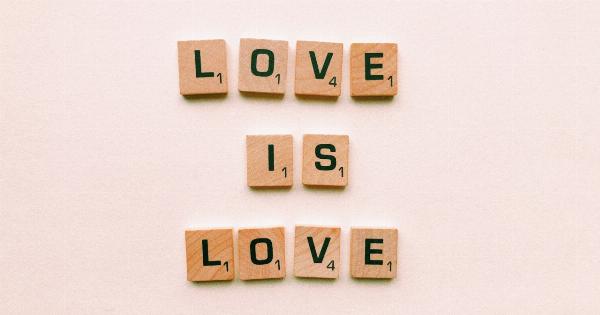Love is a complex and often mysterious phenomenon that has fascinated poets, writers, and scientists alike throughout history. The question of how long it takes to fall in love has been a topic of much debate and speculation.
Many factors contribute to the process of falling in love, including individual differences, personal experiences, and the nature of the relationship. In this investigative article, we will explore various studies and theories that shed light on the timeline of falling in love.
The Stages of Falling in Love
Falling in love can be seen as a multi-stage process, with each stage having its own unique characteristics and duration.
While these stages may not be experienced in the same order or with the same intensity by everyone, they provide a general framework for understanding the timeline of falling in love.
Infatuation: Love at First Sight?
Some believe in the notion of love at first sight, where intense feelings of infatuation and attraction arise within moments of meeting someone.
However, scientific research suggests that this initial surge of emotions is more accurately described as infatuation rather than genuine love. Infatuation is often characterized by intense physical attraction and idealized perceptions of the other person.
Attraction and Lust
During this stage, the process of falling in love moves beyond infatuation and enters the realm of attraction and lust. Attraction is a complex mix of physical, emotional, and intellectual factors that draw two individuals together.
Lust, on the other hand, refers specifically to the intense desire for sexual interaction. Both attraction and lust can develop rapidly or gradually depending on various factors, including chemistry, shared interests, and compatibility.
Attachment and Emotional Bonding
As time progresses, the initial sparks of attraction and infatuation begin to settle, giving way to a deeper emotional connection. This stage involves the development of trust, intimacy, and a sense of security with the other person.
Attachment and emotional bonding play a crucial role in maintaining long-term relationships and are essential for the longevity of love.
The Timeframe of Falling in Love
While the stages of falling in love provide a rough framework, the actual timeframe can vary significantly from person to person and couple to couple.
Some people may experience a rapid progression through these stages, while others may take longer to develop deep emotional bonds. Additionally, the intensity and duration of each stage can also differ, influenced by external factors such as previous relationship experiences and personal circumstances.
Research Findings on Falling in Love
A variety of studies have been conducted to gain insights into the timeline of falling in love.
One study published in the Journal of Social Psychology concluded that on average, it takes about three to four months for individuals to fall in love when engaged in consistent dating or spending a significant amount of time together.
The Role of Chemicals in Love
Love is not merely an abstract emotion but also has physiological underpinnings. Neurotransmitters and hormones play a key role in the experience of falling in love.
Dopamine, also known as the “pleasure hormone,” is released during the initial stages of attraction and infatuation, creating a sense of euphoria and motivation. Similarly, oxytocin, often referred to as the “bonding hormone,” strengthens emotional connections and promotes feelings of trust and attachment.
Factors Influencing the Speed of Falling in Love
Several factors can influence how quickly one falls in love with another person:.
- Compatibility: Shared values, interests, and goals can accelerate the process of falling in love.
- Physical Attraction: Strong physical attraction can lead to faster emotional connections.
- Emotional Availability: Being open and emotionally available can facilitate the development of love.
- Timing: The timing in one’s life, such as being ready for a serious commitment, can affect the speed of falling in love.
- Personal Experiences: Past relationships and personal traumas can influence the speed and willingness to fall in love.
Love in Different Cultures
Love is a universal emotion, yet its expression and the timeline of falling in love can vary across cultures. In some cultures, arranged marriages are prevalent, where love can develop gradually over time.
In contrast, societies that emphasize romantic love may experience a quicker timeline of falling in love, particularly when fueled by media and societal expectations.
The Impact of Modern Technology and Online Dating
The rise of technology, particularly online dating platforms, has undoubtedly impacted the process of falling in love.
The ability to connect with a wide range of potential partners has increased the opportunities for finding love but has also raised questions about the authenticity and depth of these connections. Some argue that online dating can accelerate the process of falling in love due to increased exposure to potential partners, while others believe that true emotional bonding still requires real-world interactions and shared experiences.
The Complexity of Love
Falling in love is a complex and deeply personal experience that cannot be easily quantified or predicted.
While studies and theories provide valuable insights into the timeline of falling in love, they should be seen as rough guidelines rather than absolute truths. Love is a unique journey for each individual and couple, influenced by a multitude of factors that extend beyond scientific explanations.
Conclusion
Investigations into how long it takes to fall in love highlight the intricate nature of this transformative experience.
While it is difficult to pinpoint an exact timeframe, the stages of infatuation, attraction, attachment, and emotional bonding provide a general framework for understanding the process. Factors such as compatibility, physical attraction, emotional availability, and personal experiences can all influence the speed at which individuals fall in love.
Love remains a beautiful and enigmatic phenomenon that defies a one-size-fits-all approach, making it all the more intriguing.




























